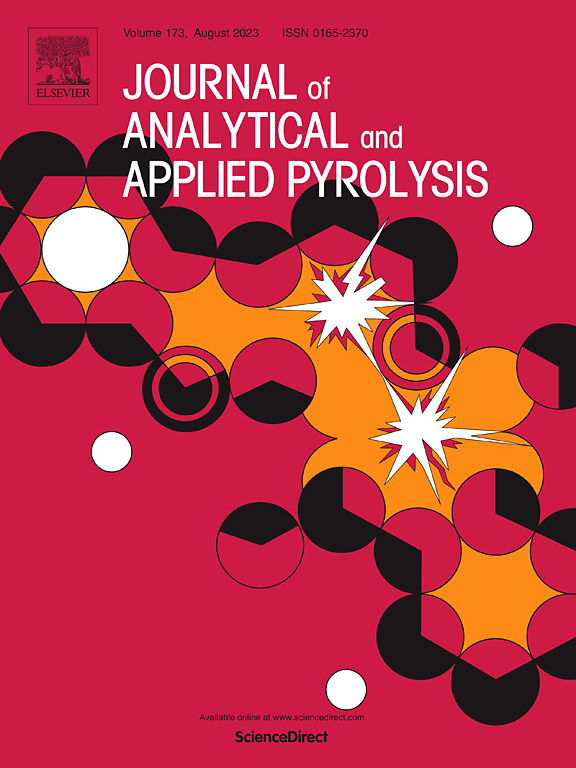生物质/聚氨酯泡沫废料的共热解:使用 Aspen Plus 进行热力学研究
IF 5.8
2区 化学
Q1 CHEMISTRY, ANALYTICAL
引用次数: 0
摘要
由于固体废弃物种类繁多且特征相同,本研究旨在考虑在热解过程中使用各种原料生产液体燃料。考虑的原料包括木质和非木质生物质以及塑料废料,其中以锯屑(SD)、棕榈叶(PL)和聚氨酯泡沫(PU)废料为代表。本研究根据热力学研究确定了纯固体废物以及生物质和塑料废物的共热解。利用 Aspen Plus 模拟器开发的热解过程模型,研究了在更宽的热解温度和混合重量比范围内的产品产量、高热值(HHV)和能耗。模拟结果清楚地表明,使用纯聚氨酯废料可提供最高的产油量(∼44 wt%),与之相对应的是最高的 HHV(∼28 MJ/kg)。在 400 °C 下进行的热解可以提供最大量的油。对于共热解,结果显示,在两种生物质中掺入更多的聚氨酯废料可提高产油量和 HHV,同时能耗较低。从模拟结果来看,生物质与聚氨酯废料的最佳混合重量比为 25:75,可提供合适的产油量(43 wt%)、高热值(26 MJ/kg)和能耗(243 kW)。本文章由计算机程序翻译,如有差异,请以英文原文为准。
Co-pyrolysis of biomass/polyurethane foam waste: Thermodynamic study using Aspen Plus
Due to the varieties and identical feature of solid waste, this research aims to consider the use of various feedstocks in pyrolysis process for liquid fuel production. The feedstock considered covers woody and non-woody biomass and plastic waste which are represented by sawdust (SD), palm leaf (PL) and polyurethane foam (PU) waste. In this research, both pure solid waste and the co-pyrolysis of biomass and plastic wastes were determined based on thermodynamics study. The model of pyrolysis process developed through Aspen Plus simulator was implemented to study the product yield, higher heating value (HHV) and energy consumption with a wider range of pyrolysis temperature and blending weight ratio. The simulation results clearly showed that the use of pure PU waste can provide the highest oil yield (∼44 wt%) which is corresponded to highest HHV (∼28 MJ/kg). The pyrolysis, operating at 400 °C, can provide the most significant quantity of oil. For the co-pyrolysis, the results revealed that more PU waste blended in both biomasses can improve both oil yield and HHV while the energy consumption is lower. From the simulation results, the optimal blending weight ratio of biomass and PU waste at 25:75 can provide suitable oil yield (∼43 wt%), HHV (∼26 MJ/kg) and energy consumption (243 kW).
求助全文
通过发布文献求助,成功后即可免费获取论文全文。
去求助
来源期刊
CiteScore
9.10
自引率
11.70%
发文量
340
审稿时长
44 days
期刊介绍:
The Journal of Analytical and Applied Pyrolysis (JAAP) is devoted to the publication of papers dealing with innovative applications of pyrolysis processes, the characterization of products related to pyrolysis reactions, and investigations of reaction mechanism. To be considered by JAAP, a manuscript should present significant progress in these topics. The novelty must be satisfactorily argued in the cover letter. A manuscript with a cover letter to the editor not addressing the novelty is likely to be rejected without review.

 求助内容:
求助内容: 应助结果提醒方式:
应助结果提醒方式:


